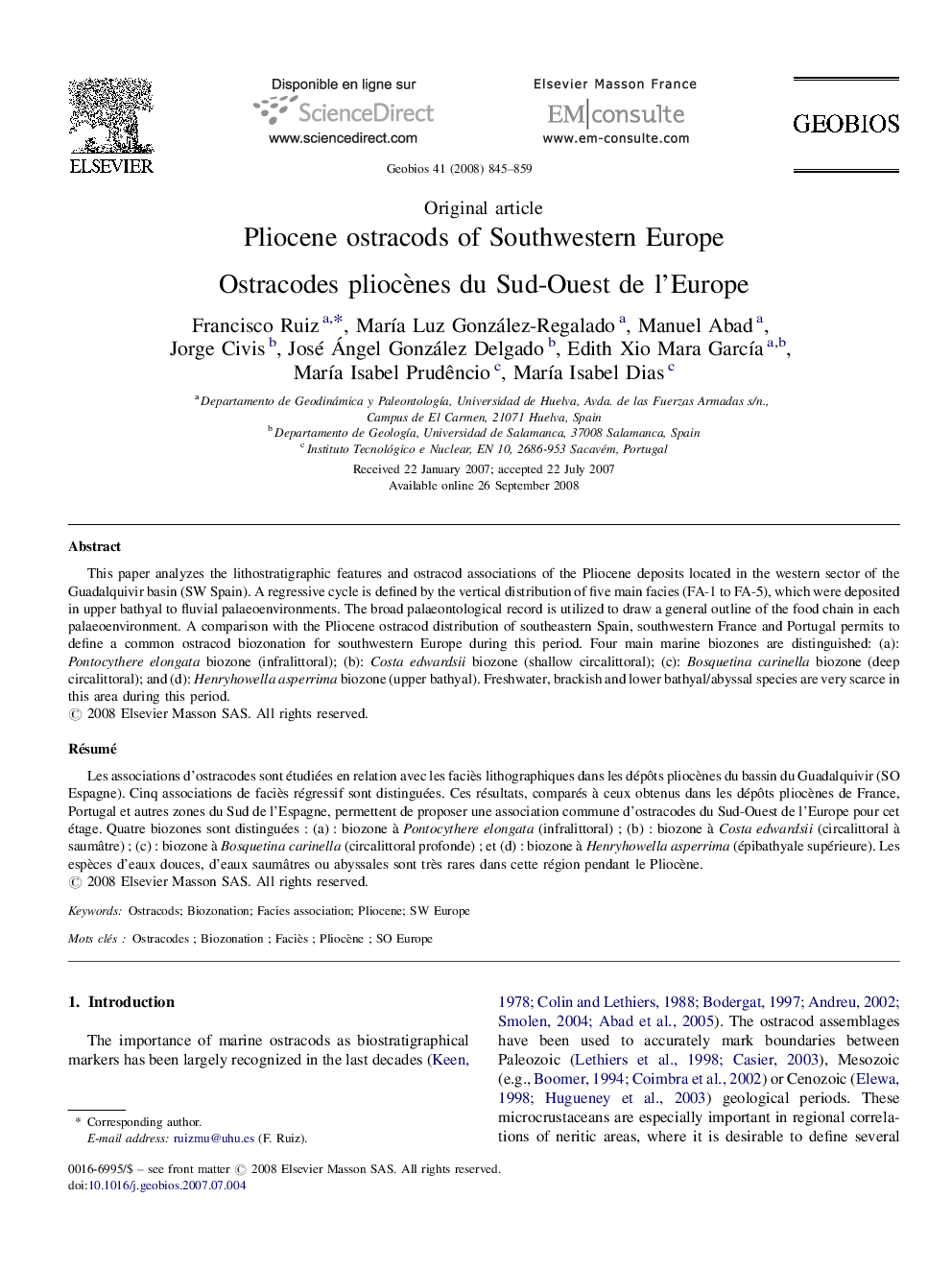| کد مقاله | کد نشریه | سال انتشار | مقاله انگلیسی | نسخه تمام متن |
|---|---|---|---|---|
| 4748481 | 1360109 | 2008 | 15 صفحه PDF | دانلود رایگان |

This paper analyzes the lithostratigraphic features and ostracod associations of the Pliocene deposits located in the western sector of the Guadalquivir basin (SW Spain). A regressive cycle is defined by the vertical distribution of five main facies (FA-1 to FA-5), which were deposited in upper bathyal to fluvial palaeoenvironments. The broad palaeontological record is utilized to draw a general outline of the food chain in each palaeoenvironment. A comparison with the Pliocene ostracod distribution of southeastern Spain, southwestern France and Portugal permits to define a common ostracod biozonation for southwestern Europe during this period. Four main marine biozones are distinguished: (a): Pontocythere elongata biozone (infralittoral); (b): Costa edwardsii biozone (shallow circalittoral); (c): Bosquetina carinella biozone (deep circalittoral); and (d): Henryhowella asperrima biozone (upper bathyal). Freshwater, brackish and lower bathyal/abyssal species are very scarce in this area during this period.
RésuméLes associations d’ostracodes sont étudiées en relation avec les faciès lithographiques dans les dépôts pliocènes du bassin du Guadalquivir (SO Espagne). Cinq associations de faciès régressif sont distinguées. Ces résultats, comparés à ceux obtenus dans les dépôts pliocènes de France, Portugal et autres zones du Sud de l’Espagne, permettent de proposer une association commune d’ostracodes du Sud-Ouest de l’Europe pour cet étage. Quatre biozones sont distinguées : (a) : biozone à Pontocythere elongata (infralittoral) ; (b) : biozone à Costa edwardsii (circalittoral à saumâtre) ; (c) : biozone à Bosquetina carinella (circalittoral profonde) ; et (d) : biozone à Henryhowella asperrima (épibathyale supérieure). Les espèces d’eaux douces, d’eaux saumâtres ou abyssales sont très rares dans cette région pendant le Pliocène.
Journal: Geobios - Volume 41, Issue 6, November–December 2008, Pages 845–859